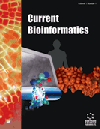
Full text loading...
This study aimed to study breast cancer, the most common cancer affecting women worldwide, using one primary and two metastatic breast tumor cell lines to identify therapeutic drugs.
Investigating the changes in gene expression triggered by drugs offers a robust method for uncovering potential new treatments. Through the analysis of the impacts of drugs on gene activity, scientists can unravel the molecular mechanisms within cells, comprehend the effects of drugs, identify chances for drug repositioning, and foresee patient outcomes to treatments.
Our approach has involved two main strategies: analyzing drug-perturbed gene expression profiles and leveraging drug-induced gene expression profiles. Firstly, we have assessed how drugs affect the expression of target genes in a dose-dependent manner, determining whether they inhibit or activate gene expression. This analysis could inform the identification of new potential drugs. Secondly, we have grouped drugs based on their expression profiles to explore potential synergistic effects.
Our methodology has involved quantifying gene profile changes relative to drug dosage, categorizing effects as up-regulating or down-regulating, and employing functional enrichment with cancer hallmark annotations to predict drugs with potential for cancer treatment. Additionally, we have determined the optimal number of drug groups with similar effects on gene expression and explored their mechanisms of action through cancer hallmark annotations.
By analyzing dose-dependent gene expression, we have found that seven, three, and five drugs may induce similar sets of up-regulated and down-regulated genes in Hs-578-T, MCF7, and MDA-MB-231 cell lines, respectively. Clustering and functional enrichment analyses have suggested a shared molecular mechanism of action among these drug candidates.
We have thus categorized drugs with opposing gene expression profiles and proposed new drug candidates for breast cancer treatment based on cancer hallmark annotations. Moreover, our study has uncovered synergistic drug combinations, including those utilizing FDA-approved drugs, for primary and metastatic breast cancer cell lines.

Article metrics loading...

Full text loading...
References


Data & Media loading...
Supplements

